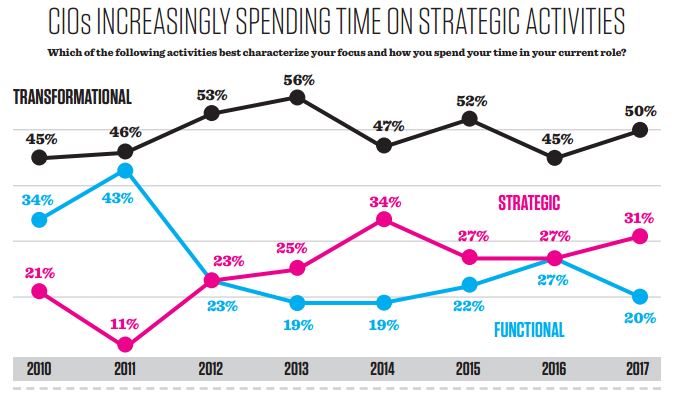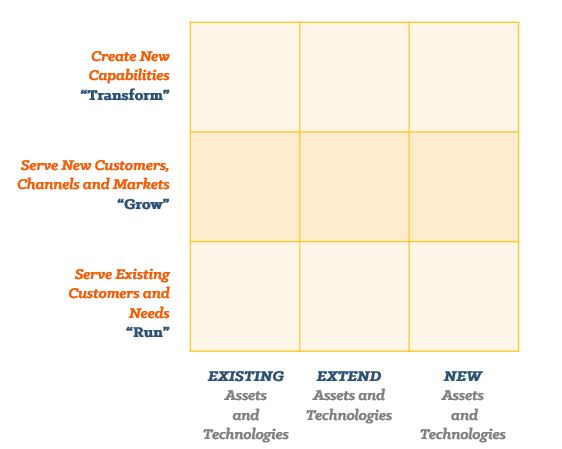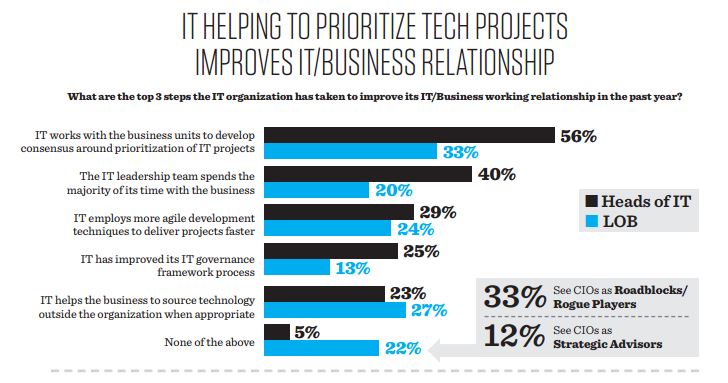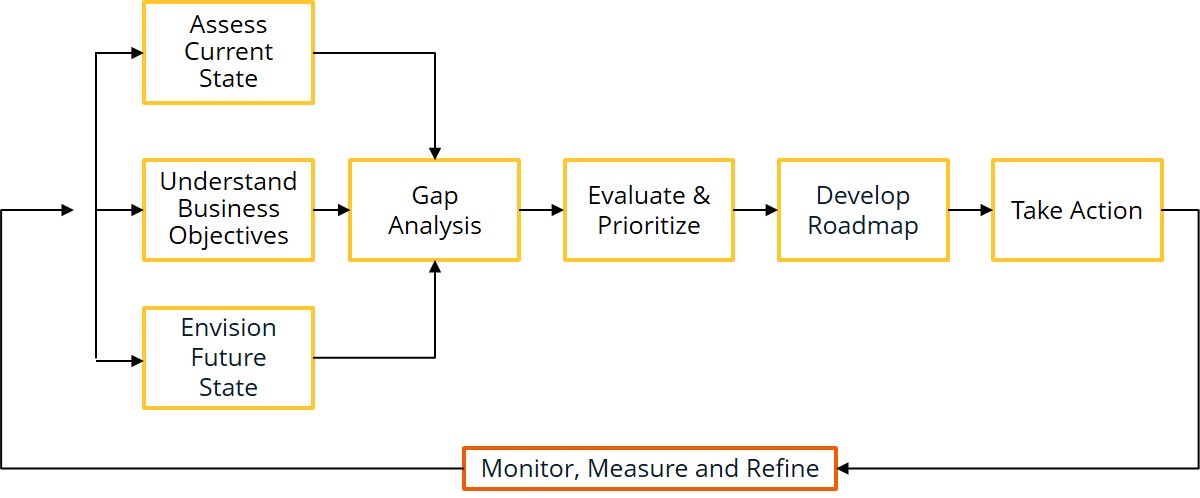The CIO and Analytics Strategy: Ironside’s Take
CIO and IDG released the 2017 State of the CIO report this week. Their findings are useful not just for the CIO role in general but also for exploring the connection between the CIO and analytics initiatives. Looking at the report through the lens of data and analytics, I had three reactions to the survey results:
- CIOs should consider using analytics to drive business innovation, backing up their transformational and strategic activities with concrete resources.
- CIOs and line of business leaders should consider communicating even more and syncing expectations through data and analytics.
- CIOs should consider investing in a data and analytics roadmap to enable themselves as both business strategists and technicians.
1. Analytics Allow Business Innovation
The report indicates that 63 percent of LOB respondents see CIOs as strategic advisors or consultants. This perception matches the uptick in CIO focus on transformational and strategic activities.

Source: State of the CIO 2017 – CIO, IDG
Despite this, however, only 33 percent of CIOs say they spend time driving business innovation. That’s an increase over the previous year, but a more dramatic shift is called for here. Getting there requires more resource allocation away from functional activities and toward extending or evolving the IT function to support business goals. Strategic data and analytics initiatives are a great way to do that.
One useful method for looking at resource allocation is Gartner’s Run Grow Transform model. At Ironside, we’ve adapted this approach into a matrix for clients to consider:

Source: Run, Grow and Transform the Business IT Spending – Gartner
For most organizations, a maximum of 40 percent of technology-related resources should be in that bottom left square keeping the lights on. An additional 15 percent of resources should be in the top right corner, designing new capabilities to transform the organization.
The rest of the resources should extend the business’s reach in existing and developing areas or explore new methods of using existing and evolving technologies and channels. This approach helps CIOs make sure they’re distributing IT spending in ways that the business side recognizes as valuable to enterprise strategies and goals. It correlates CIO and IT activities directly with business process improvements and new revenue streams while also setting aside proper resources to maintain essential functions.
Data and analytics gives a large return on investment here, opening avenues to new innovations and bringing business stakeholders the data needed for new goals and strategic growth. It can also give IT access to the diagnostic information required to keep core assets running smoothly at the same time. The CIO should have a tight link to these initiatives to ensure technical focus on the right areas and communicate between business and IT.
2. Analytics Increase Communication
Thinking of the CIO as a communicator is useful, especially because of the disconnect that still exists between business and IT around how they perceive their relationship. The State of the CIO report did a great job of highlighting this:

Source: State of the CIO 2017 – CIO, IDG
It’s clear that the perspectives don’t quite match. After all, the only category in which it seems business perceives IT as improving relationships at a higher rate than IT does is sourcing new technology. Plus, there’s another disconnect here between the amount of business stakeholders perceiving the CIO as a roadblock or rogue element and the 63 percent of business stakeholders I mentioned in my first point who see them as strategic advisors or consultants. How do we remedy this conflict in perception?
Self-service analytics helps to both reduce the conflict and evolve perception. Giving business a well-governed path to actionable insights relieves a major IT-related concern: time. Traditional enterprise analytics forced business to request new data outputs from IT, often leading to backlogs, waiting, and stale results. A data discovery strategy lets business answer new questions and lets IT focus on the improvement efforts we talked about earlier.
The CIO is well-positioned to gather and relay the information needed for successful self-service analytics adoption. They can set strategic importance, form a governance committee, and pass business use cases to IT implementers.
3. The Data and Analytics Roadmap Enables the CIO
85 percent of CIOs surveyed in the report feel their role is becoming more important, but only 59 percent of LOB respondents agree. Becoming the owner of a well-constructed data and analytics roadmap is a path the CIO can use to reduce this gap.
Balancing enterprise and self-service data and analytics needs requires input from business and IT. The CIO is the ideal person to lead this charge. They’re already expected to link technology to strategy, and building a concrete plan for data and analytics achieves this goal in one activity.

Getting to this point requires a multi-stage process that discovers key use cases across the business, implements and optimizes technologies, and fosters user adoption of new solutions. With the skills crunch 49 percent of CIOs are feeling around data science and analytics, having a trusted partner can make all the difference in this journey.
Conclusion: The CIO and Analytics Evolve Together
Overall, I found the State of the CIO 2017 survey results insightful and enlightening. They accurately describe the journey that many CIOs are on, and show some marked progress on both the business and IT sides toward stronger communication and coordination. That said, though, there’s still a lot of ground to cover. The pace of technological change is only going to increase, and business demands will only become more pressing as better, faster options become available. CIOs should get ahead of this now by surfacing clear connections between business strategy and IT capabilities.
This is why I recommend that the CIO and analytics become inextricably linked in organizational culture. The CIO is a strong fit as a steward for a data and analytics roadmap, and the benefits coming from implementing that plan will help bridge the current perception gap between IT and business functions. Assess your data and analytics maturity carefully and take steps now to evolve as a strategic and technical asset to your company.
About Ironside
Ironside was founded in 1999 as an enterprise data and analytics solution provider and system integrator. Our clients hire us to acquire, enrich and measure their data so they can make smarter, better decisions about their business. No matter your industry or specific business challenges, Ironside has the experience, perspective and agility to help transform your analytic environment.






